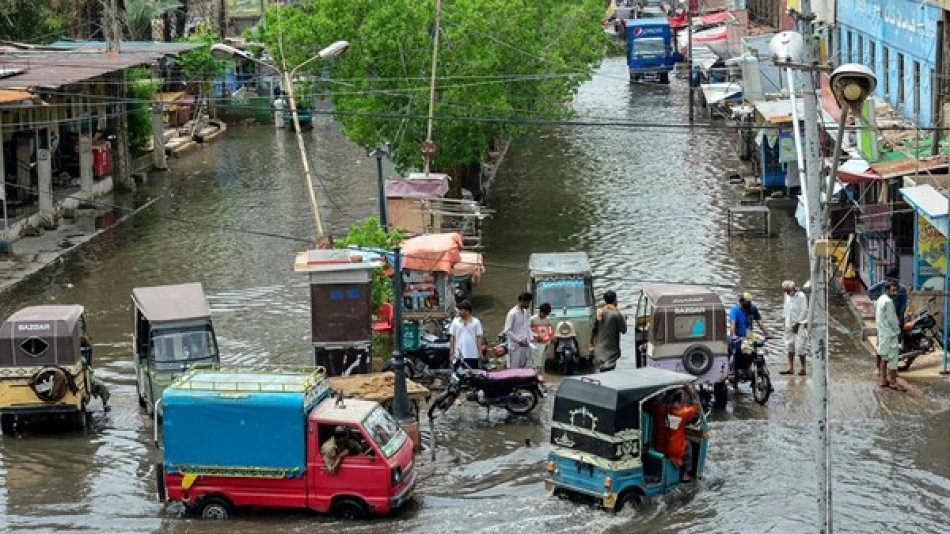
Heavy Rains Wreak Havoc Across Pakistan: Widespread Damage Reported in Multiple Cities
Pakistan Faces Deadly Monsoon Crisis as Lahore Floods Revive 2022 Disaster Memories
Heavy monsoon rains have paralyzed Pakistan's second-largest city Lahore and multiple urban centers across Punjab province, killing at least 10 people and injuring 92 others in a 24-hour period. The deluge has triggered widespread flooding, power outages, and transportation chaos, while meteorologists warn of more severe weather ahead in July and August—raising fears of a repeat of the catastrophic 2022 floods that affected 33 million Pakistanis.
Infrastructure Collapse Exposes Urban Vulnerabilities
The latest rainfall, which began Monday morning, has brought Lahore—a metropolitan area of over 11 million people—to a virtual standstill. Roads have transformed into rivers, trapping vehicles and forcing businesses to shut down. The city's electricity authority announced that repair work cannot begin until the rain subsides, leaving millions without power during the peak summer heat.
This infrastructure breakdown highlights Pakistan's chronic urban planning deficiencies. Lahore's drainage system, designed for far smaller population loads, has proven inadequate against increasingly intense monsoon patterns. The city's rapid expansion over the past two decades has occurred with minimal investment in flood management infrastructure.
Economic Implications Mount as Monsoon Season Intensifies
The timing of these floods carries significant economic consequences for Pakistan, already grappling with a severe financial crisis and International Monetary Fund bailout negotiations. Punjab province generates approximately 60% of Pakistan's GDP, making disruptions in cities like Lahore particularly damaging to national economic recovery efforts.
The transportation paralysis affects key supply chains connecting Pakistan to regional markets, potentially impacting textile exports—the country's primary foreign currency earner. Previous flood events have shown that even brief urban flooding can disrupt manufacturing for weeks, as factories struggle with power outages and worker mobility issues.
Climate Pattern Signals Dangerous Months Ahead
Pakistan's meteorological department has issued warnings for continued heavy rainfall through July and August, predicting rising river levels and potential flooding across multiple provinces. This forecast is particularly alarming given Pakistan's recent climate history.
The 2022 monsoon season devastated Pakistan, submerging one-third of the country and causing over $30 billion in damages. Climate scientists have identified Pakistan as among the world's most vulnerable nations to extreme weather events, despite contributing less than 1% of global carbon emissions.
Regional Context and Preparedness Gaps
Unlike neighboring countries such as Bangladesh, which has invested heavily in flood management systems, or India's major cities that have upgraded drainage infrastructure, Pakistan's urban centers remain largely unprepared for climate-intensified monsoons. The contrast is stark when compared to regional economic competitors like Vietnam or Thailand, where flood management has become integral to urban development planning.
The current crisis underscores Pakistan's need for immediate infrastructure investment and long-term climate adaptation strategies. Without significant improvements to urban drainage systems and early warning mechanisms, Pakistani cities will continue to face annual disruptions that compound the country's economic challenges and threaten millions of lives.
Most Viewed News

 Layla Al Mansoori
Layla Al Mansoori






